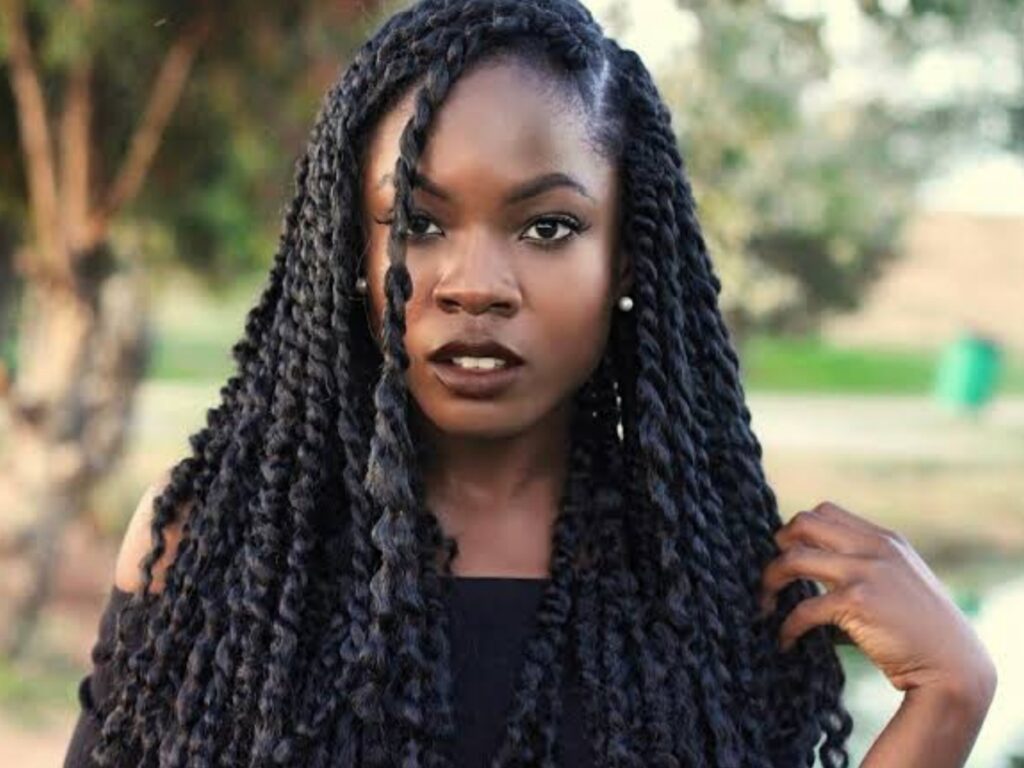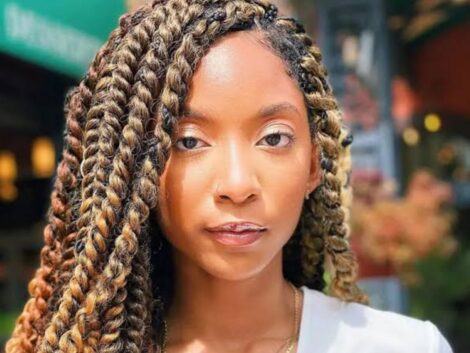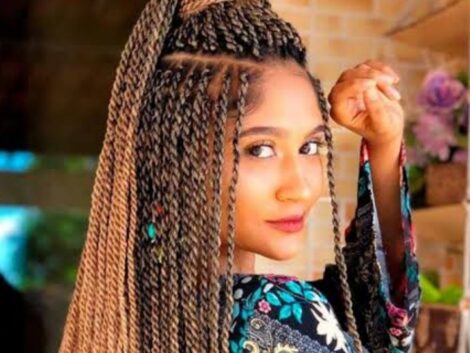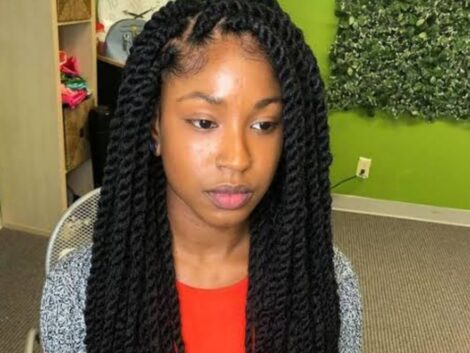Yes, Senegalese twists can get wet, and the wetness can cause the twists to unravel quickly. That’s why you’re advised not to soak the twists in water for too long and just wash it as quickly as you can. Afterward, you must dry your hair properly. It’s best to wait at least two days after installing the twists before you get them wet. In this article, you can learn more about Senegalese twists.
How much do Senegalese twists usually cost?
On average, Senegalese twists can cost you anywhere between $100 to $300. It can depend on several factors.
For example, the stylist’s skill and experience level can cause price variations. A more experienced stylist will also have better quality work, so they will charge more. It depends on the reputation of the salon in general, too. A salon with a higher reputation, or one that is considered quite classy, will have expensive services. On the other hand, regular neighborhood salons might charge you much less.
But the most significant deciding factor in the cost is the length of your hair. Naturally, the longer or denser your hair is, the more hair extensions will be required to make the twists.
Which is better, the Senegalese twist vs. micro braids?
Between Senegalese Twist and Micro Braids, the one that suits your personal preferences better is obviously the better one. Both hair treatments come with their own unique style and look. With your hair, you might be able to rock both, or you’ll rock either one of them. Depends on which.
Microbraids are basically a bunch of tiny, intricate braids that are installed into your hairstyle by using your natural hair or hair extensions. So they are much smaller in size than Senegalese twists. Naturally, it takes longer to get those done, and hence it’s also comparatively costly. But one advantage is that it stays on longer than Senegalese twists, so all your effort won’t go to waste. Microbraids give your hair a detailed and sharp look, which is why they’ve always been trendy.
As for Senegalese twists, they look more natural because the hair extensions are twisted around your natural hair. They’re comparatively low-maintenance since they’re not as minute as microbraids, but they’re also more common. It is better for those with a thicker mass of hair, in contrast tomicrobraids micro braids, which are better for finer hair types.
So which one is better ultimately depends on your personal preferences, hair type, and what style you’re going for. You can try both and see which one looks better on you.
What is a Senegalese Afro-Twist?
A Senegalese Afro twist is a versatile hairstyle that comes as a variation of a Senegalese twist where you can add more volume to your hair.
Compared to a regular Senegalese twist, an afro twist will have small or medium-sized coils. An afro-textured finish will top it off, which will add more volume to your hair. So you can go for the afro twists if you want to add that extra texture and volume to your hair and achieve a more natural look.
The process for Afro twists isn’t much different than the regular Senegalese twists. First, your hair will be sectioned and braided, and then the extensions will be added by twisting them around each section of the braid. Only the length and thickness of the twists will vary; usually, it is smaller and thinner than Senegalese twists but much thicker than micro braids. But that also depends on the type, density, and length of your hair.
The added volume allows you to style your hair in a wide variety of ways. Whether you leave it loose or put it into one or two buns, it’s bound to look great on you.
How to get a Senegalese twist with alopecia
If you have alopecia, getting Senegalese twists done might be a bit risky for your hair. However, it’s not impossible to do it. You just have to talk with your dermatologist and confirm if you can do it or not because every alopecia patient is different.
If your dermatologist deems it okay, then there are a few things you have to keep in mind while getting it done. These are-
- Make sure the stylist is being extra gentle with your hair while doing the twists. It’s best to apply enough moisturizer beforehand to avoid dryness and breakage.
- Since you can’t afford to cause tension in your hair, the hair extensions used must be lightweight so that they don’t pull on your scalp. Synthetic braiding hair is a good example.
- Medium-sized twists are more recommended than large ones for alopecia patients. The twists will be less tight and hence put less pressure on your scalp.
- You don’t want the twists to rub too much against the pillow when you sleep at night, as it can damage your hair. So it’s best to wear a silk or satin scarf before going to bed.
- Don’t get the Senegalese twists too often, and leave breaks between each treatment to rest your hair.
How long does the Senegalese twist last?
Senegalese twists typically last between 4 and 8 weeks. The duration depends on how good of a job the stylist did, how well you maintained it, as well as your hair type. Actually, keeping the twists on for more than 8 weeks can be harmful to your hair and cause a lot of damage. So even if it stays on for longer than that, you should not remove it.
But most of the time, they barely last up to a month. In that case, it’s possible to make the twists last longer by keeping them in top condition. Here are some tips for doing that:
- Use soft shampoo to keep your hair clean and moisturized.
- Don’t twist, tug, or pull your hair.
- Avoid using heat treatments and styling products while you’re styling your hair.
Lastly, check out the mane caper shop.





